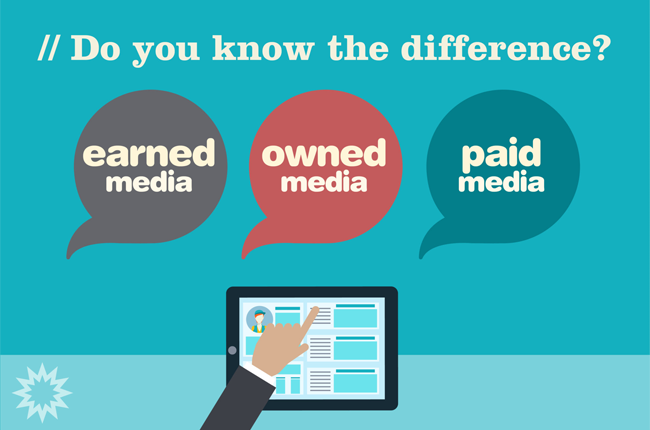
By Alan E. Young
In a marketing landscape where content is king, you might think it’s just a matter of creating and distributing great content. After all, if great content is what every consumer craves from the brands they favor, delivering it should be the easy part — right? But in fact, that’s not the case at all. While content is undeniably an integral piece of any modern marketing strategy, business leaders are quick to realize that the curation of valuable and timely content is only half the battle.
Back in the day, big brands had to buy an ad or film a TV commercial to get their product in front of their target market. In today’s market, advertising has evolved beyond print ads and commercials to include social media, influencer marketing, articles and thought leadership, integrated marketing activations and so much more. Although this means that brands don't necessarily have to pay for ad space or TV commercial spots as they did in the past, much of the other media formats are still, in fact, paid.
Existing within what we call a “pay to play” marketing landscape, brands today are primarily working with social media platforms that have set algorithms for content prioritization, and large media brands and publications that have a robust readership. In other words, free exposure is hard to come by, especially when working within platforms or publications that can leverage the value associated with their (substantial) exposure. This is where paid, earned and owned media comes into play. Let’s break it down:
1. Paid Media: Includes pay per click, display ads, retargeting, paid influencers, paid content promotion via publications (whitepapers, press releases, articles), social media ads and more
2. Earned Media: Includes shares, mentions, reposts, unpaid coverage or social media posts and reviews
3. Owned Media: Includes website properties, LinkedIn, Pulse, blog, apps, stores, and social media platforms
One major change on the radar is a blurring of the lines between earned and paid media which some call native advertising or sponsored content, and many readers can’t easily tell the difference between the two. In fact, it may be difficult to find staff-written pieces, because much content has become paid, challenging the traditional idea of paid versus earned media, and raising the question, “Has public relations turned into glorified advertising?” Not if you align your content placement with your goals.
So, what does this look like within the B2B hospitality and travel industry specifically, you might wonder?
First, it’s important to realize that paid, earned and owned media all occupy a relevant position in your big-picture marketing scheme. In other words, they are all a necessary piece of the puzzle to creating a cohesive content strategy that effectively tells your brand story. Second, we must remind ourselves that in a niche industry, such as hotel and travel, maximizing exposure with the help of paid media is undeniably essential. Lastly, it’s crucial to identify the varying control your brand will have over each tier of content distribution. In the case of paid and owned media, you are in the driver’s seat and have complete autonomy over the way in which your brand is represented. Earned media, on the other hand, often exists outside a brand’s realm of control and while unpaid, this can present its own challenges.
Essentially, owned media acts as a true extension of your brand and an on-going opportunity for prospective guests to interact with you. It’s ever-important to ensure your website content is updated regularly with press releases and blogs, and that your brand is continuously active on social media platforms. With the use of platforms such as LinkedIn (which recently changed its algorithm to indulge up-and-coming brands), marketers can establish themselves as engaged thought leaders while engaging directly with prospects and partners.
Earned media, on the other hand, represents a digital form of word-of-mouth, driving positive engagement and/or excitement around your brand. This consists of pitching to journalists something that is timely, newsworthy or disruptive. Big names, acquisitions, funding rounds, innovations and sexy startups usually get the most attention and coverage, so don’t expect every press release you do to get pickup, but with consistent effort, your brand will likely get worthy mentions and coverage over time.
Lastly, we arrive at paid media. When it comes to maintaining a consistent content cadence that increases your brand awareness, it becomes essential to budget for the inclusion of paid media. Why? Because not only is earned media (at times) hard to come by, but it also doesn’t adhere to any specific schedule or brand control. This means that to maximize your content strategy, increase visibility, and ensure your audience remains engaged, brands should establish paid partnerships with the most reputable media outlets. For some, paid media might be a prospects first exposure to your brand. That content placement, even if paid for, will garner clicks and attention that may convert to followers and leads, helping to nudge your products and solutions in the same trajectory as larger, big budget competitors. Not only that, but popular media sites are already set — meaning that they’ve conquered the social algorithms and SEO rankings to ensure they are a top search result. While that would be a decidedly tricky task to accomplish for each piece of content on your own, putting that content in the hands of established players ensures there are no roadblocks in the way of its distribution. Established industry trade publications have already cemented a relationship with their readership — by this, we mean they have earned the trust of their audience. By including mention of your brand, they are lending that credibility and authority to your brand using association. This is especially important for emerging brands looking to carve out space for their brand within a competitive industry while keeping up with ever-evolving technology ecosystem. Further, the results of paid content are, by nature, much easier to track than organic content. Again, this comes back to the control associated with paid media — through those partnerships; brands can expect to receive valuable feedback re viewership, engagement, and response to their content.
At the end of the day, creating great content is an integral first step — getting it in front of the right audience plays a pivotal role in ensuring your content strategy effectively promotes your brand as an industry leader. While each element of media has its specific role and relevance, using all three together will ensure your brand story continuously translates to the right audience, at the right time. Need help with yourB2B content marketing strategy? Let us know.


